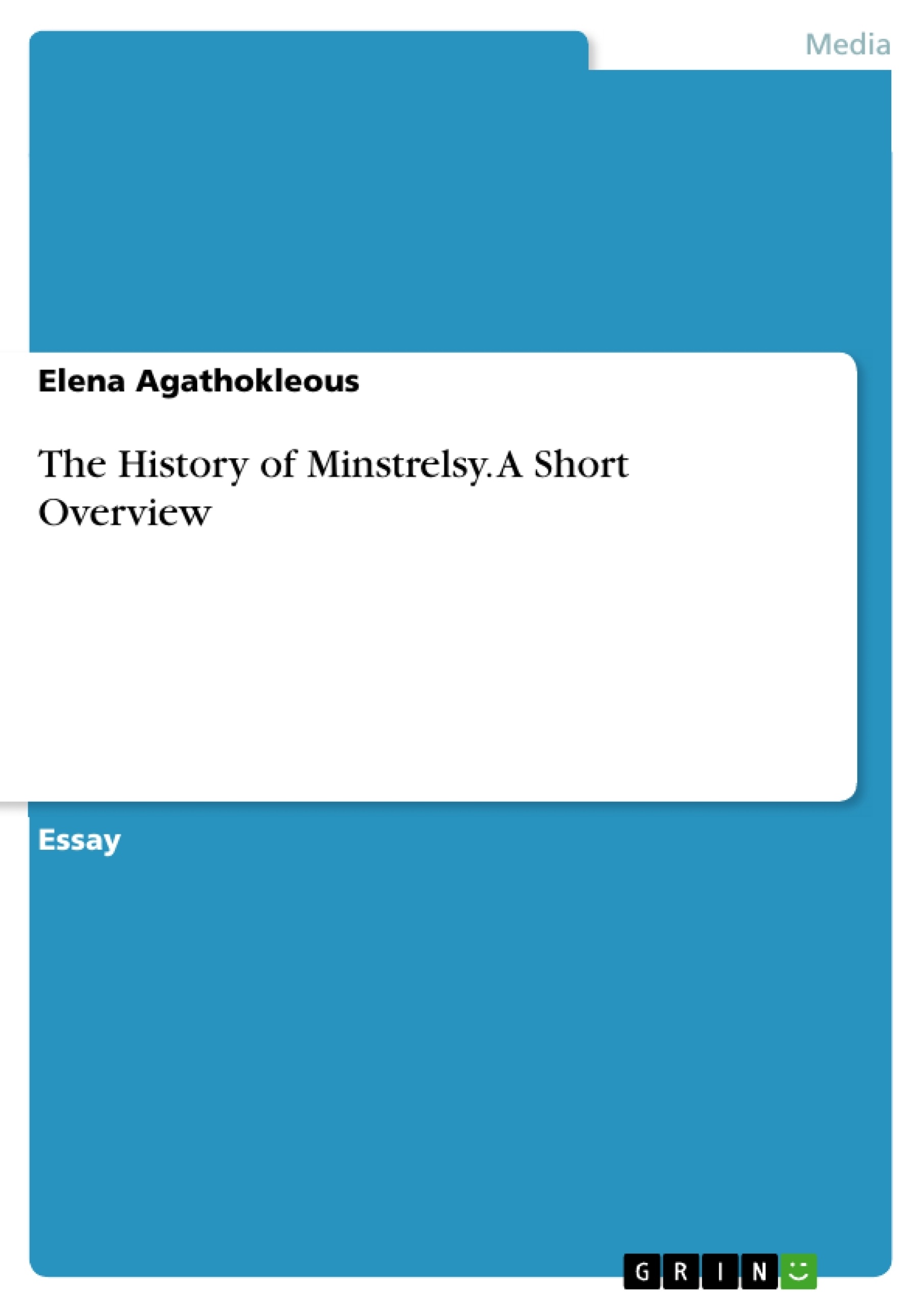This essay gives a short overview about the history of minstrelsy from different perspectives.
Minstrel shows were a form of an entertainment show that appeared in America around the 1820’s, which was centered on the stereotype of African American slaves with themes from slavery and plantation life. After their first appearance, Minstrel shows became very popular very fast and soon they became a phenomenon that spread throughout America.
The origins of Minstrelsy are traced back to the creation of a character named "Jim Crow", a plantation worker dressed in rugs and who had a limp, dancing and singing in the street in a funny way.
Table of Contents
- The Origins of Minstrelsy
- The Character of Jim Crow
- The Formation of Minstrel Groups
- The Rise of Minstrelsy
- Blackface Performance
- Stereotypes and Caricatures
- The Black Dandy
- The Development of Key Characters
- The Success of Minstrel Shows
- Appealing to the Working Class
- Mocking White and Black Stereotypes
- Asserting White Dominance
- Black Participation in Minstrelsy
- The Rise of Black Performers
- The Double-Edged Sword of Participation
- Satire and Resistance
- The Legacy of Minstrelsy
- Critiques and Controversies
- The Impact of Racist Stereotypes
- The Perpetuation of Racism
Objectives and Key Themes
This text aims to provide a comprehensive understanding of the origins, evolution, and impact of minstrelsy, a popular form of entertainment in 19th-century America. It examines the show’s historical context, exploring how it reflected and reinforced prevailing societal norms and prejudices.
- The creation and development of minstrel shows
- The role of blackface performance and its impact on racial representation
- The influence of minstrelsy on American culture and its lasting legacy
- The complexities of black participation in minstrel shows
- The critique of minstrelsy for perpetuating racist stereotypes and its contribution to the historical and ongoing legacy of racism in American society
Chapter Summaries
The early chapters focus on the emergence of minstrelsy and its rapid rise to popularity. The text explores the origins of the character "Jim Crow" and the formation of minstrel groups, highlighting the importance of Thomas Rice and "The Virginia Minstrels" in shaping the genre. The chapters also delve into the evolution of blackface performance, examining the development of key characters like the "Black Dandy" and the role of performers like Dixon and Rice in popularizing these figures.
The text then analyzes the reasons behind the immense success of minstrel shows, emphasizing their appeal to the working class, their use of satire and stereotypes, and their role in reinforcing white dominance over black culture. The chapters also explore the complexities of black participation in minstrelsy, examining how black performers navigated the challenges and limitations of their roles, while seeking to challenge stereotypes and promote black pride.
Keywords
The text delves into the historical context of minstrelsy, exploring its origins, evolution, and lasting impact. Key themes include blackface performance, racial stereotypes, the role of entertainment in shaping societal norms, and the complexities of black identity and representation in a racially charged historical context. The text also explores the critical responses to minstrelsy, examining its enduring influence on American culture and its perpetuation of racist narratives.
- Quote paper
- Elena Agathokleous (Author), 2018, The History of Minstrelsy. A Short Overview, Munich, GRIN Verlag, https://www.grin.com/document/1007715



